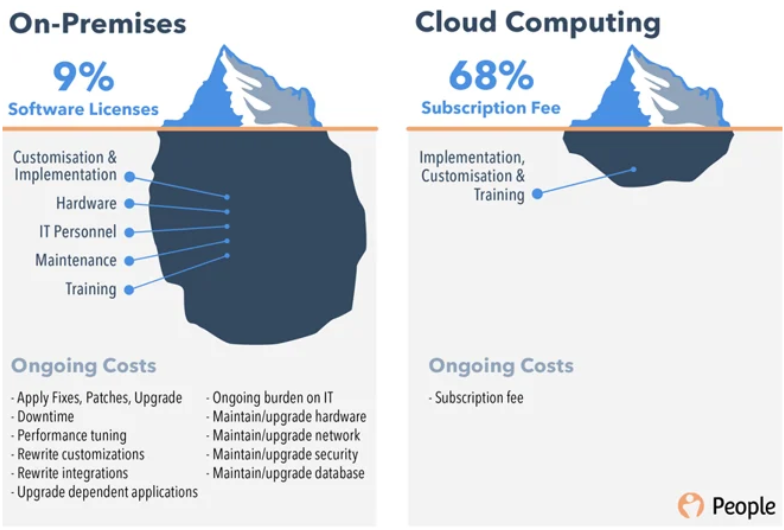In today’s rapidly evolving digital landscape, the Software-as-a-Service (SaaS) model has emerged as a pivotal force and is transforming how businesses operate and deliver value. This shift is not merely a technological upgrade but a strategic move that offers profound benefits to both companies and consumers. This article delves into the reasons behind the accelerating adoption of SaaS, its advantages, and why this transition is now opportune.
The evolution of software delivery
Traditionally, software was delivered through on-premise installations, requiring significant upfront investments in infrastructure and perpetual licensing fees. This model often led to prolonged deployment times and complex maintenance processes. The advent of SaaS has revolutionised this approach by offering cloud-based solutions accessible via the internet, thereby eliminating the need for extensive on-site hardware and enabling faster, more efficient software deployment.

Key drivers of SaaS adoption
1. Economic efficiency
SaaS operates on a subscription-based model, allowing businesses to convert substantial capital expenditures into manageable operational expenses. This pay-as-you-go structure provides financial flexibility, enabling companies to allocate resources more effectively and scale services in alignment with their growth trajectories. Notably, the global SaaS market is projected to reach $390.46 billion by the end of 2025, reflecting its economic viability and widespread adoption.
2. Enhanced accessibility and collaboration
The cloud-based nature of SaaS ensures that users can access applications from any location with internet connectivity. This universal accessibility fosters seamless collaboration among geographically dispersed teams, promoting productivity and innovation. For instance, platforms like Dropbox and Salesforce enable real-time collaboration and data sharing, which are essential for modern business operations.
3. Rapid deployment and scalability
SaaS solutions are designed for swift implementation, reducing the time-to-value for businesses. Moreover, these platforms offer inherent scalability, allowing organisations to adjust their usage based on demand without the need for significant infrastructure modifications. This flexibility is particularly advantageous for businesses experiencing fluctuating workloads or rapid growth.
4. Continuous updates and innovation
SaaS providers manage all maintenance and updates, ensuring that users have access to the latest features and security enhancements without manual intervention. This continuous improvement cycle allows businesses to stay competitive and focus on their core competencies rather than IT maintenance.

Benefits of SaaS for businesses
1. Cost savings
By eliminating the need for on-premises hardware and reducing maintenance expenses, SaaS offers a cost-effective alternative to traditional software models. According to James Leichter of Aptora, a field service Software-as-a-Service company owner, businesses can avoid large upfront costs and instead opt for predictable subscription fees, aiding in better financial planning. This model is especially beneficial for small and medium-sized enterprises looking to optimise their IT budgets.
2. Improved security and compliance
Leading Software-as-a-Service providers invest heavily in security measures and compliance certifications, offering robust data protection that many organisations might find challenging to implement independently. This includes adherence to standards such as GDPR, HIPAA, and SOC 2, ensuring that customer data is handled with the highest level of security and privacy.
3. Scalability and flexibility
SaaS solutions allow businesses to easily scale their operations up or down based on current needs. This flexibility supports dynamic business environments and helps organisations respond swiftly to market changes without the constraints of traditional software infrastructure.
4. Enhanced focus on core business activities
With the technical aspects managed by the Software-as-a-Service provider, internal IT teams can redirect their efforts toward strategic initiatives and innovation, driving business growth and competitiveness.

Benefits of SaaS for consumers
1. Accessibility and convenience
Consumers can access Software-as-a-Service applications from various devices and locations, providing unparalleled convenience and flexibility. This is particularly beneficial in today’s mobile-centric society, where users demand seamless experiences across platforms.
2. Cost-effective solutions
SaaS models often offer tiered subscription plans, allowing consumers to select services that fit their needs and budgets. This approach democratises access to advanced software capabilities that were once limited to large organisations.
3. Regular updates and feature enhancements
Users benefit from automatic updates, ensuring they always have access to the latest features and improvements without the hassle of manual installations. This continuous improvement leads to a better user experience and increased satisfaction.
4. Data security and privacy
Reputable SaaS providers implement stringent security protocols to protect user data, offering peace of mind to consumers concerned about privacy and data breaches.

Current trends in SaaS adoption
The Software-as-a-Service industry is experiencing exponential growth, with projections indicating that the market will reach $1.23 trillion by 2032. This surge is driven by factors such as the integration of artificial intelligence and machine learning, which will maximise the capabilities of SaaS applications. Additionally, the COVID-19 pandemic has accelerated digital transformation, prompting businesses to adopt SaaS solutions to support remote work and ensure operational continuity.
Conclusion
The transition to Software-as-a-Service models represents a strategic evolution in how businesses and consumers interact with technology. The myriad benefits, including cost savings, scalability, enhanced security, and accessibility, make SaaS an attractive option in today’s digital age. As the market continues to grow and evolve, embracing Software-as-a-Service is not just a technological upgrade but a critical move to stay competitive and meet the dynamic needs of the modern world.
For even more opinion pieces like this, click right here.